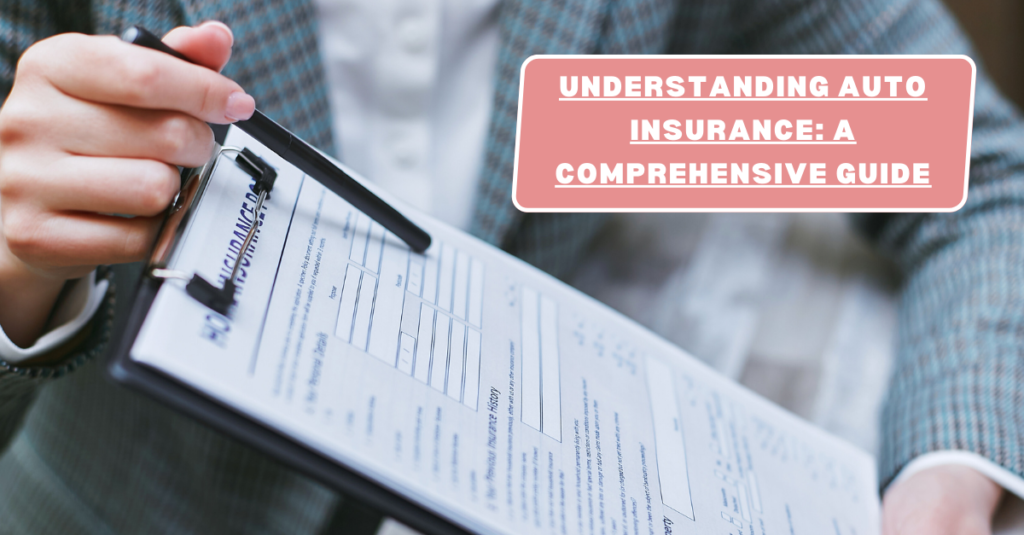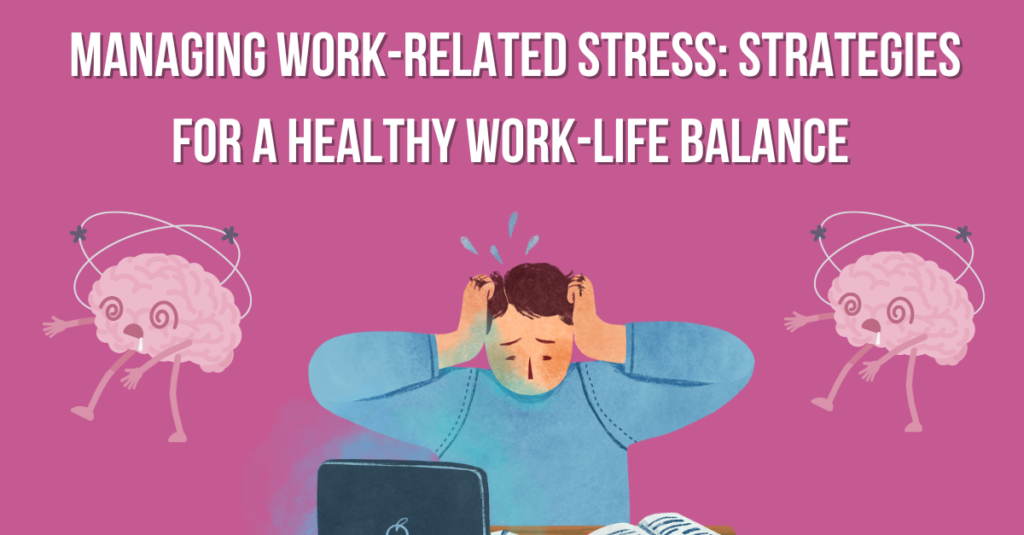Understanding Auto Insurance: A Comprehensive Guide
Introduction
Welcome to “Understanding Auto Insurance: A Comprehensive Guide.” As we navigate the highways and byways of our modern world, auto insurance stands as a fundamental pillar of protection. This guide serves as your roadmap to demystify the intricate realm of auto insurance, offering a detailed exploration of its core concepts, coverage nuances, premium determinants, and more. Auto insurance isn’t just a financial requirement—it’s a safeguard against the unforeseen, providing peace of mind for drivers and their vehicles.
Whether you’re a seasoned driver seeking to deepen your understanding or a newcomer about to embark on your driving journey, this guide equips you with the knowledge needed to confidently navigate the world of auto insurance. Join us as we break down the complexities, empower you with informed choices, and ensure you’re prepared for whatever the open road brings your way.
Understanding Auto Insurance: A Comprehensive Guide
The Essence of Auto Insurance
At its core, auto insurance is a contractual agreement between an individual and an insurance provider that offers financial protection against the costs associated with accidents, theft, and other unforeseen events involving a vehicle. Beyond being a financial safety net, auto insurance is often a legal requirement in many places, ensuring that drivers are equipped to handle potential liabilities that may arise from accidents.
Types of Auto Insurance Coverage
Auto insurance coverage is a multifaceted landscape, encompassing various categories tailored to address specific needs. Here are some of the primary types of coverage:
- Liability Coverage: This is the foundation of most auto insurance policies. Liability coverage consists of two main components—Bodily Injury Liability and Property Damage Liability. Bodily Injury Liability covers medical expenses, legal fees, and other costs arising from injuries to others in an accident you are responsible for. Property Damage Liability, on the other hand, covers damage caused to someone else’s property, such as their vehicle or other structures.
- Collision Coverage: If your vehicle sustains damage in a collision, this coverage helps cover the repair or replacement costs. It’s especially valuable for newer vehicles, as it ensures you’re not left with a hefty bill after an accident.
- Comprehensive Coverage: Comprehensive coverage extends beyond collisions, covering damage caused by incidents like theft, vandalism, natural disasters, and more. This comprehensive safety net ensures that you’re protected from a wide range of unforeseen events.
- Personal Injury Protection (PIP): Found in no-fault insurance states, PIP coverage helps cover medical expenses and lost wages for you and your passengers, regardless of who caused the accident.
- Uninsured/Underinsured Motorist Coverage: In cases where you’re involved in an accident with a driver who doesn’t have sufficient insurance coverage, this type of coverage ensures that your medical expenses and damages are still taken care of.
Factors Affecting Auto Insurance Premiums
Auto insurance premiums aren’t one-size-fits-all; they’re influenced by various factors that assess the level of risk a driver poses to the insurer. These factors include:
- Age and Driving Experience: Younger, inexperienced drivers typically face higher premiums due to their increased risk profile.
- Vehicle Type and Usage: The make and model of your vehicle, as well as how often you drive it and for what purposes, play a role in determining your premium.
- Driving Record and Claims History: A clean driving record with no accidents or violations generally leads to lower premiums, while a history of accidents and claims can increase your rates.
- Location and ZIP Code: Areas with higher rates of accidents, theft, and vandalism tend to have higher premiums.
- Credit Score’s Impact: In some regions, insurance companies may consider your credit score when calculating premiums, as a lower credit score can be indicative of higher risk.
- Deductibles and Coverage Limits: Choosing a higher deductible (the amount you pay out of pocket before insurance kicks in) can lead to lower premiums. However, it also means you’ll pay more in the event of a claim.
Navigating the Claims Process
Accidents happen, and that’s where auto insurance truly proves its worth. When it’s time to file a claim, the process generally involves the following steps:
- Filing a Claim: Contact your insurance provider and provide details about the accident or incident.
- Claims Process: Once the claim is filed, an adjuster will assess the damages and determine the coverage and compensation you’re entitled to.
- Assessing Damages and Repairs: Repairs can be handled by approved mechanics or repair shops, and the insurance company may cover the costs directly.
- Reimbursement and Settlements: Depending on your policy and the situation, the insurance company will either directly pay for repairs or reimburse you after you’ve paid for the repairs yourself.
Choosing the Right Auto Insurance
With numerous insurance providers and policies available, choosing the right one can be overwhelming. Here are some tips to consider:
- Assessing Personal Needs: Evaluate your driving habits, vehicle type, and financial situation to determine the coverage you require.
- Comparing Quotes: Obtain quotes from multiple insurance companies to find the best rates and coverage options.
- Understanding Policy Terms: Familiarize yourself with key terms, coverage limits, deductibles, and any additional benefits or restrictions.
- Customer Service and Reviews: Research the reputation of insurance companies in terms of customer service, claims handling, and overall satisfaction.
- Bundling and Discounts: Many insurers offer discounts for bundling multiple policies (such as home and auto) or for having safety features in your vehicle.
Emerging Trends in Auto Insurance
The landscape of auto insurance is evolving, with several notable trends on the horizon:
- Usage-Based Insurance (UBI): UBI uses telematics technology to monitor driving behavior, allowing insurers to offer personalized rates based on actual driving habits.
- Telematics and IoT Integration: The integration of telematics devices and Internet of Things (IoT) technology allows insurers to collect real-time data, enabling more accurate premium calculations.
- Rise of Electric Vehicle (EV) Insurance: As electric vehicles gain popularity, insurers are developing specialized policies that cater to the unique needs of EV owners.
- Impact of Autonomous Vehicles: The advent of self-driving cars raises questions about liability and insurance coverage in the event of accidents involving autonomous vehicles.
- Sustainable and Eco-Friendly Initiatives: Insurers are increasingly offering discounts and incentives for eco-friendly vehicle choices, promoting sustainability.
Conclusion
Auto insurance is more than just a financial obligation; it’s a protective shield that grants peace of mind as we navigate the roads. Armed with the knowledge presented in this comprehensive guide, you’re better equipped to make informed decisions about your auto insurance needs. From understanding coverage options to navigating the claims process and staying abreast of industry trends, you have the tools to drive confidently, knowing you’re safeguarded against life’s unexpected twists and turns.

My name is Rohit Vagh and I’m a content writer specializing in fashion and lifestyle. I have three years of experience in this field and have written various articles. My writing style is creative and engaging, and I strive to create content that resonates with my readers. I have a deep passion for fashion and am constantly researching the latest trends and styles to make sure my readers are up to date. I’m excited to continue my career in blogging, and I’m always looking for new opportunities in the fashion and lifestyle space.





